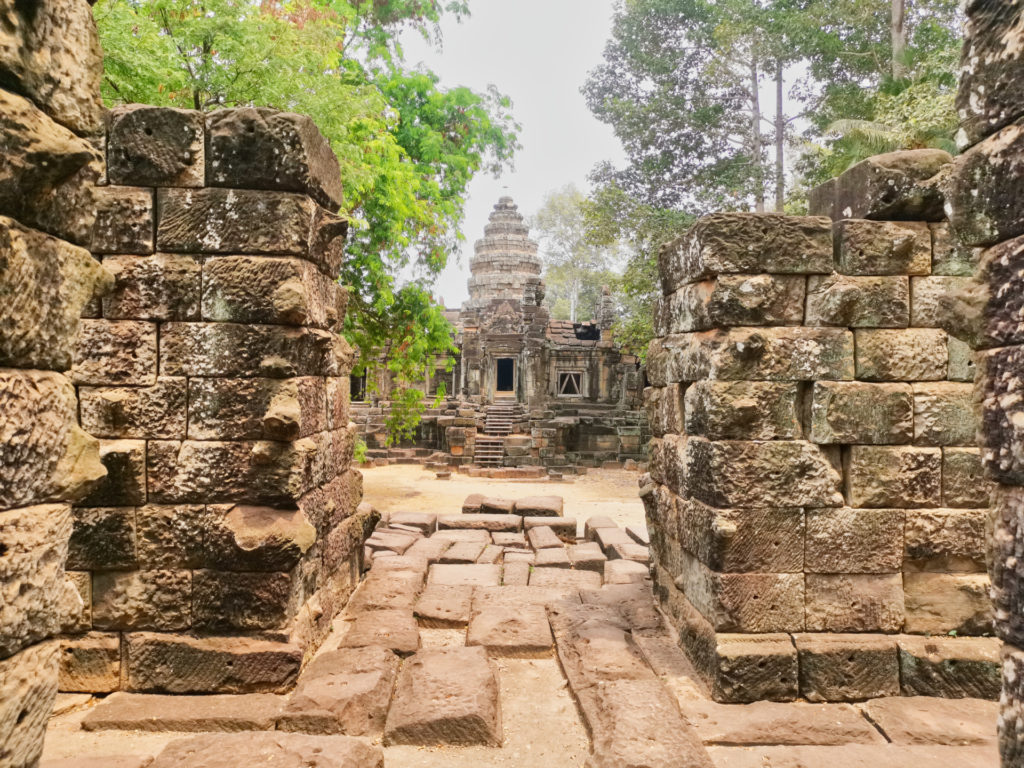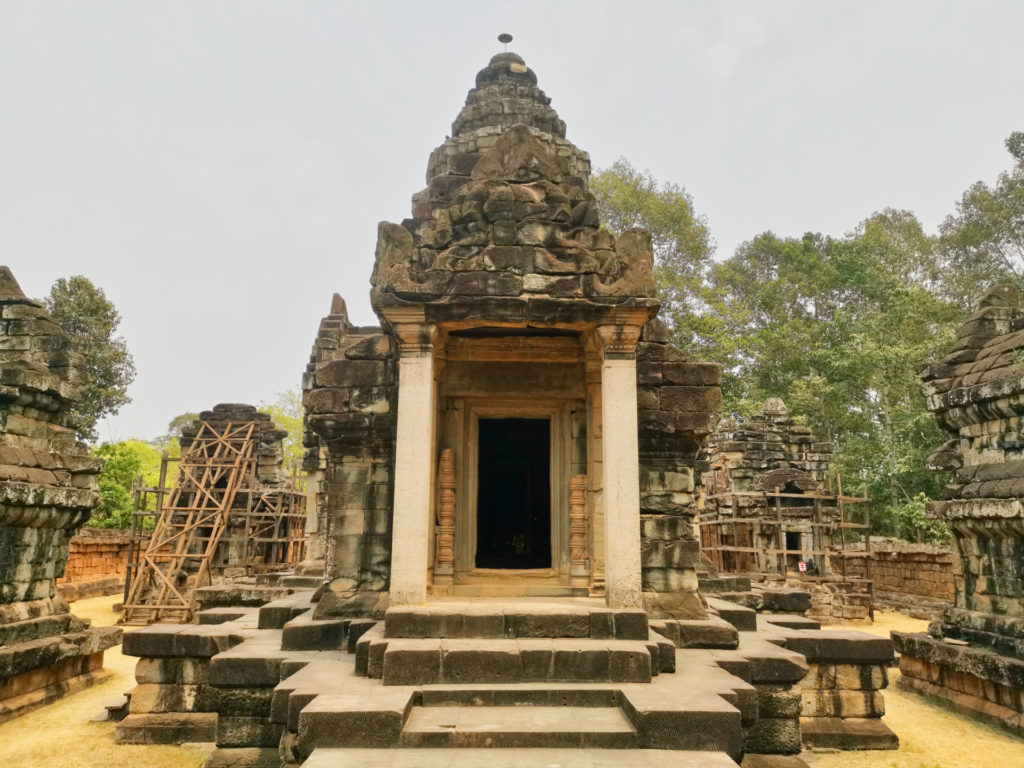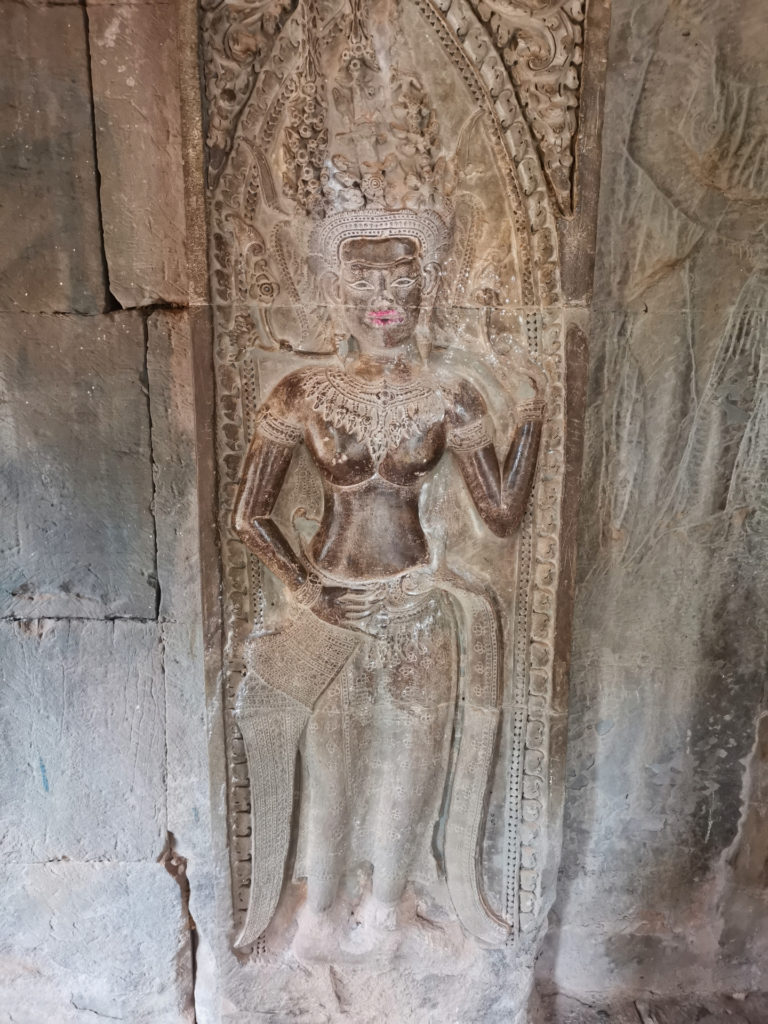What Athvea – a temple directly in the city area of Siem Reap
Wat Athvea is a temple that is still within the city limits of Siem Reap.
The temple complex was commissioned by King Suryavarman II in the 12th century and was originally a Hindu structure dedicated to the deity Shiva. However, as with many of the temple complexes in the region, there is an active Buddha temple there today. Of particular interest is that there is also a cemetery and a pagoda at the temple compound’s railings.

On the way to the temple Wat Athvea
Wat Athvea was built of laterite and sandstone and is so far still in a comparatively well-preserved condition. There are no inscriptions on the interior walls and only a very few carvings. Thus, it is difficult to classify the use of the temple at that time as well as the circumstances of its construction and, above all, to reconstruct them to some extent today. Even the exact date of construction can only be narrowed down on the basis of the applied architectural style by means of comparison with similar buildings. For this reason there are still many myths about Wat Athvea. Furthermore, due to the almost complete lack of sculptures, it is possible that the building is a shell that was never finished.
The temple complex is located about 6 kilometers south of Siem Reap and not far from Chong Kneas and Tonle Sap. Wat Athvea is a flat temple, which means that there are no different levels or stepped buildings, but all the premises are on the first floor. The complex faces west, but nowadays visitors enter the temple through an entrance coming from the east. This is a special feature, which can be found only in a few buildings of this period. Normally, the use of the temple as a burial place can be assigned to it (however, there is little to suggest that besides the cemetery, a royal tomb should have been located here).

Inner courtyard of the temple
In the inner courtyard there is still a massive laterite wall, which is amazingly well preserved, and is about 50 meters long. In the center is the main sanctuary, which is surrounded by four satellite structures facing west.
Overall, it is the lack of any further historical attribution and the associated sense of mystique and mystery that makes this temple complex so attractive and exciting for visitors. Another great advantage here is that Wat Athvea is not necessarily one of the busiest sights in the region, so visitors can take their time to explore the architectural masterpiece in detail without it being swamped by crowds of tourists. For the best light conditions, however, it can be said that a visit is especially beneficial in the early morning.
A background noise of insects surrounds the temple

An apsara inside the temple